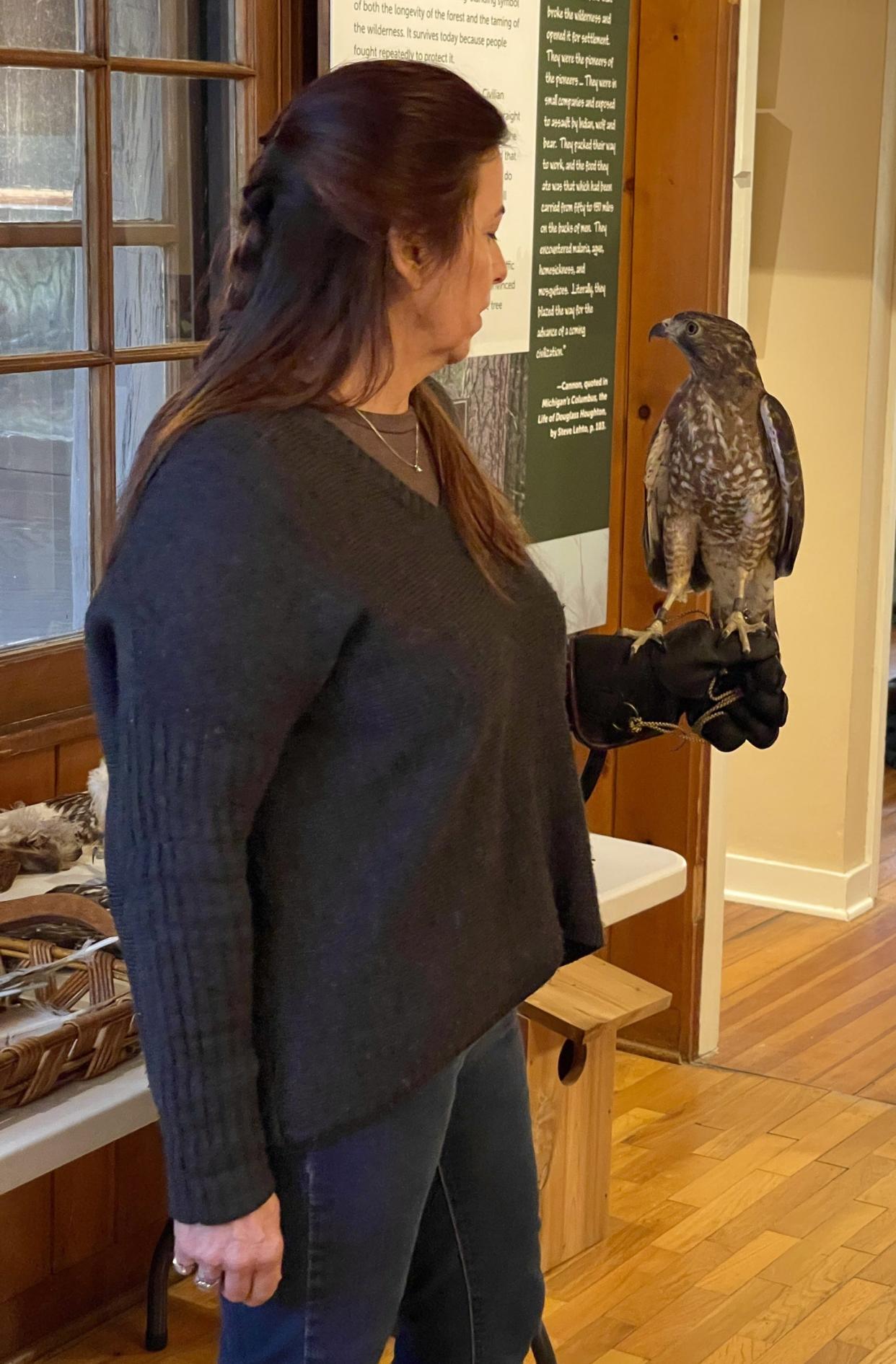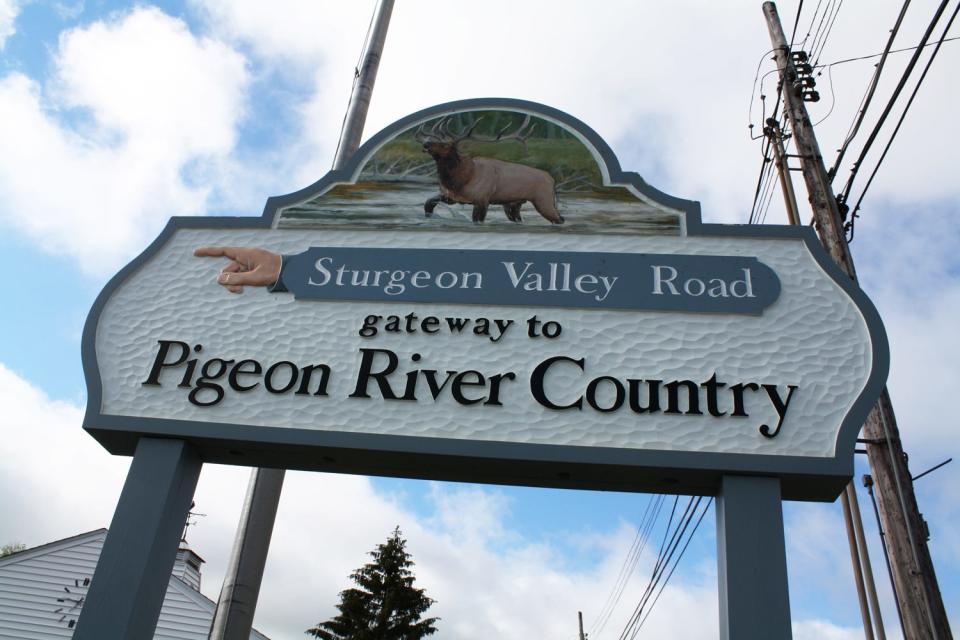Program on birds of prey to kick off Pigeon River center series

GAYLORD — Beginning on April 20, the Pigeon River Country Discovery Center will host the 2024 Community Event Series in the heart of the largest block of contiguous undeveloped land in the state's Lower Peninsula.
"This year we have eight workshops from spring until fall," said Jan Kellogg, a volunteer with the Pigeon River Discovery Center.
The center, located at 9984 Twin Lakes Road about 12 miles east of Vanderbilt, has a history that is almost as fascinating as the forest surrounding it.
It is a log cabin structure that was built by the Civilian Conservation Corps (CCC) in the 1930s during the Great Depression. At one time it was used as a residence for the forest supervisor. In 2015, a volunteer group that included the Pigeon River Country Association, Pigeon River Country Advisory Council, the DNR and the Otsego County Historical Society rehabbed the structure into a learning center.
The April 20 “Michigan’s Raptors” workshop will feature a presentation on birds of prey like eagles and hawks. Representatives of the Skegemog Raptor Center will bring some of their rehabilitated birds for viewing as they discuss the birds’ adaptations and how to help them thrive. Two workshops will be held that day. The 1 p.m. session is a youth program while the 3 p.m. presentation will be focused on adults.
To register for the event, visit pigeonriverdiscoverycenter.org/event/michigans-raptors.
At 6 p.m. on May 15, Christopher Struble of Petoskey, president of the Michigan Hemingway Society, will present “Hemingway’s Last Good Country: the PRC." He will look at the influence Northern Michigan had on both Ernest Hemingway’s personal life and literature through commentary and rare family photos. To register, visit pigeonriverdiscoverycenter.org/event/hemingways-last-good-country-the-pigeon-river-forest.
Like many areas in Northern Michigan, the land that now makes up the Pigeon River Country State Forest had been ravaged by decades of lumbering activity. Kellogg said most of the area's trees were cut and turned into lumber that helped to build Chicago, Detroit and other cities.
About 100 years ago a rustic area that a young Ernest Hemingway once roamed for hunting and fishing opportunities eventually became the Pigeon River Country State Forest.
Subscribe Check out our latest offers and read the local news that matters to you

In 1919, a university professor named P.J. Lovejoy became a proponent of turning several available pieces of land into one contiguous development that would be used for conservation and recreation.
"He wanted to create a habitat that would be suitable for bear, elk and other animals to thrive," Kellogg said.
Elk were reintroduced to the area in 1918 by importing animals from the west after being hunted to extinction.
The state first established the Pigeon River State Forest in 1919 by acquiring properties that were for sale because of back taxes. The Pigeon River Country now consists of approximately 177 square miles (over 100,000 acres) in northern Lower Michigan. It is large, varying from six to 12 miles, east to west, and is 20 miles from north to south, extending from southeastern Cheboygan County to northeastern Otsego County and northwestern Montmorency County.
— Contact Paul Welitzkin at pwelitzkin@gaylordheraldtimes.com.
This article originally appeared on The Petoskey News-Review: Program on birds of prey to kick off Pigeon River center series

